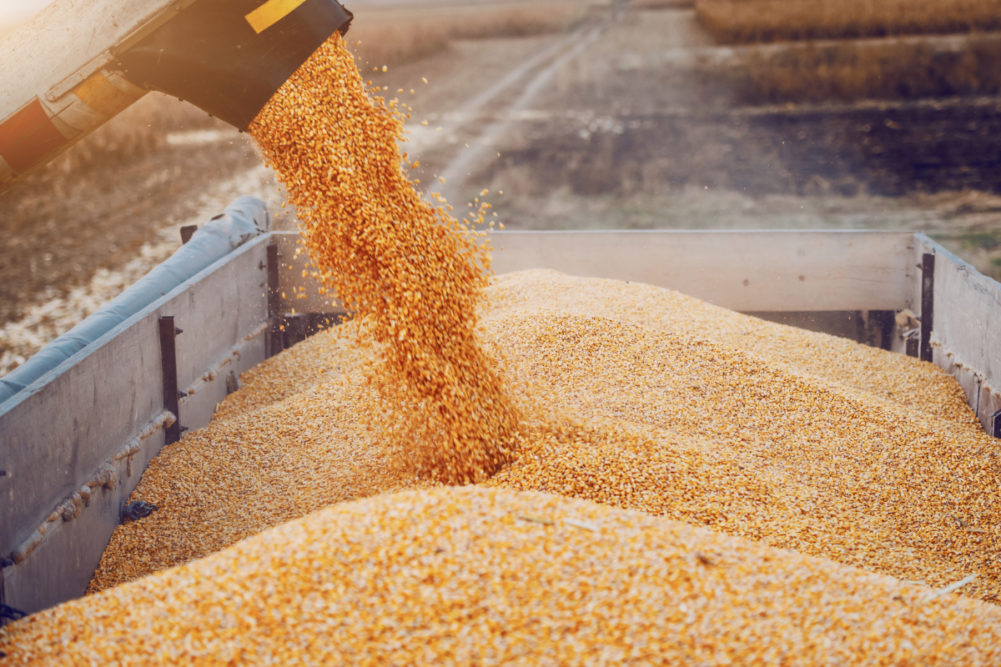 KANSAS CITY — Amid surging demand for groceries over the last several weeks, considerable attention has been directed toward the final stages of the food supply chain. Overtime work and heightened risk of infection exposure have been necessary to meet consumer demand for food as the severity of the coronavirus outbreak came to be more widely understood.
KANSAS CITY — Amid surging demand for groceries over the last several weeks, considerable attention has been directed toward the final stages of the food supply chain. Overtime work and heightened risk of infection exposure have been necessary to meet consumer demand for food as the severity of the coronavirus outbreak came to be more widely understood.
Less attention has been directed toward critical links earlier in the supply chain, particularly those beyond the farmgate. Shining a light on the importance of keeping the agricultural supply chain intact and operational was a joint statement issued March 31 by the directors general of the Food and Agriculture Organization of the United Nations, the World Health Organization and the World Trade Organization.
In an extraordinary understatement, the leaders said “millions of people around the world depend on international trade for their food security and livelihoods.” When acting to protect the health and well-being of their citizens, countries should “ensure that any trade-related measures do not disrupt the food supply chain,” they implored.
Disruptions in the agricultural supply chain may result from any number of governmental policies, such as tighter border crossings or decisions such as a recent one by the Russian government to limit grain exports over the next three months. The WTO/FAO/WHO leaders warned such actions raise the risk of global shortages, price spikes and volatility.
The risk is simple. If the grain sector, for any reason, is unable to move large quantities of grain to market, people will go hungry. And social unrest will quickly follow.
Imprudent government policy is not the only threat to the supply chain. If workers are unable, because of illness, or unwilling to complete necessary work at country, terminal or export elevators, or trucking, barge or rail lines, supplies could be backed up through the supply chain, preventing growers from moving grain to market.
Concerns have been expressed about a small number of major ports globally, outlets and inlets for vast quantities of grain. Several of the busiest US ports are situated in locations that have been among the harder hit by the COVID-19 pandemic, including New Orleans, California and the Pacific Northwest. Yet, elevator operators, port workers, federal inspectors and others in the face of heightened risk have continued to do what is necessary to keep the grain moving. This work may not be as public facing as supermarket or health care workers, but it is crucially important and, yes, heroic. What course the pandemic will take in the coming weeks and months ahead is difficult to know, and grain companies have worked hard to develop contingency plans in the case of interruptions.
The stakes also are high for growers, already facing years of depressed farm income. Dairy farmers and growers of produce especially have been struggling in recent weeks.
While the United States remains a heavy net exporter of agricultural products, imports of wheat and other commodities and ingredients have been on the rise for the last 20 years. Long past is the time when trade was limited almost exclusively to generic commodities such as No. 1 dark northern spring wheat or No. 2 yellow corn. Users globally, including in the United States, seek functional products custom suited to consumer needs.
It’s too early to surmise what long-term ramifications for global grain trade may emanate from the current crisis. Many nations may be expected to take a harder look at food security issues. Similarly, grain buyers around the world who have spent the last few decades pressuring suppliers to accommodate ever tighter just-in-time supply chains may rethink those approaches and instead maintain a prudent degree of readiness for interruptions from pandemic, war, natural disaster or who knows what. The resilience of the grain supply chain to date has been impressive, but vigilance and sensible policies will be necessary if potentially catastrophic food shortages are to be averted in the coming weeks and months.






